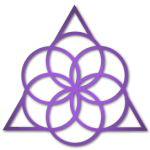Although the system is designed to be easily comprehensible for any level of student, Bowspring is not easy to practice at first. First and foremost, Bowspring alignment targets 4 areas of the body-mind posture, which tend to be the most habitually misaligned. The 4 key somatic areas of the body-mind in which Bowspring focuses on balancing and opening energetically are: the undercarriage (pelvic floor), underbelly (solar plexus), underarms (heart), and under-chin (throat). These areas of the body-mind hold unconscious psycho-emotional default patterns within our posture. Most commonly, a student’s pelvic floor is tucked under, the solar plexus is contracted, the inner ribcage is energetically deflated, and the chin is pulled down and in, all unconsciously patterned. The Bowspring alignments recalibrate and re-pattern each of these common postural tendencies, so at first the optimal template can be somatically experienced as strange and emotionally uncomfortable. An increase flow of energy in these 4 areas help provide a healthy somatic cleanse and psycho-emotional re-patterning, which is held in the cellular memory of the myofascia. This cleansing and remolding effect of the alignment on the somatic body-mind is nothing short then life-changing, but the process can be intense.
Another factor that makes Bowspring’s simple system demanding is that the method requires conscious toning all the extensor muscles on the entire posterior of the body, including the upward mounding of the glutes, which few students can do with any consistency at first.
Furthermore, the ability to press and spring off the pad of the big toe (distinguished from the mound of the big toe or the metatarsal) in every pose takes time for the student to create the neurological pathways and the required myofascial strength. The first time we ask new students to lift a foot while standing and then press only the pad of the big toe down and back on the floor, their fingers extend and their facial muscles constrict, but regardless, controlled strength of their big toe does not happen. The initial inability to control the two bones in each big toe is often surprising, frustrating, and humbling for new Bowspring students. Overall, most new students are quite challenged by doing the most basic actions in aligning toward the optimal template due to weakness and poor body-mind connection in key areas of the posterior chain of myofascia.
A third reason that beginning students don’t find Bowspring easy at first is that its alignment paradigm is contrary to other alignment systems in many key ideas, so it challenges the student’s mind to be open to something avant-garde in the yoga practice. When you have been consistently told to not bend your knees in some poses, or to not tip your pelvis anteriorily, or to always lengthen your spine by scooping your tailbone, and to extend the back of your neck forward and up for good alignment, then you become unconsciously programmed to a certain postural template. Since Bowspring can be radically different to what is generally accepted as normal and proper alignment instruction in yoga or in common posture, new students are often taken aback at first by our alignment cues for the bow-spring template. Although the student can intellectually comprehend our postural instructions, they will often perform the opposite alignment the first few times they hear the new cues because the postural habit is unconsciously so deeply engrained in their body-mind. We often have new students tell us, “I am having to open my body and mind to a completely different alignment, since this is totally opposite to what we have been taught.”

